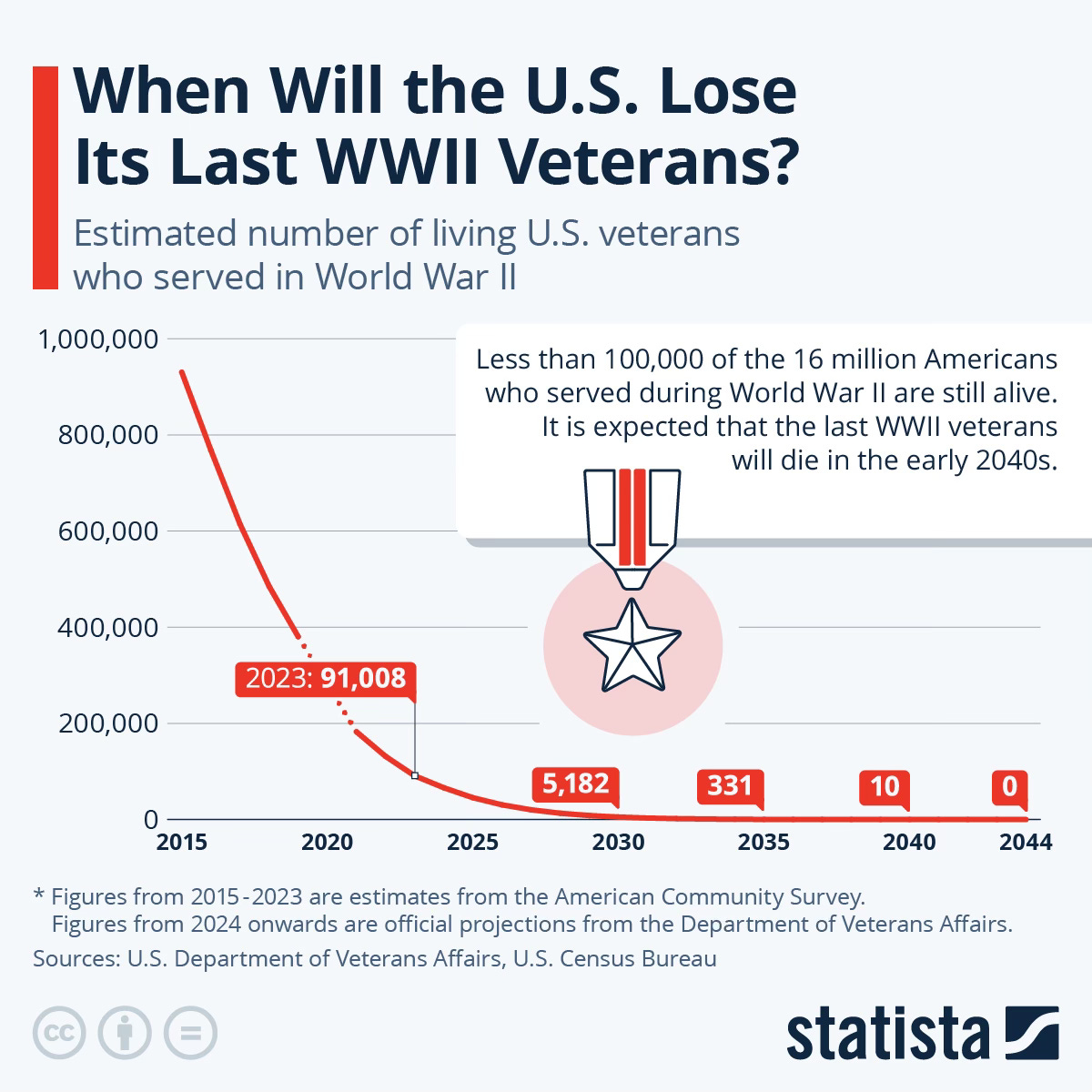Roughly 70,000 American veterans of the Second World War remain alive, down from 930,000 a decade ago. The Department of Veterans Affairs projects that the last may pass in the early 2040s, exactly a century after the conflict began.
Museums are racing to capture first-hand accounts. The National World War II Museum in New Orleans now uses AI-powered “hologram theatres” in which visitors can ask recorded veterans questions. Meanwhile, schools are testing virtual-reality trench experiences as a YouGov poll finds 37% of Americans know little or nothing about the war.
This month’s 80th anniversary of VE Day featured drone light shows over Normandy and live-streamed interviews with centenarian pilots. Yet civil-education specialists warn that ceremonial flash cannot replace sustained teaching once living witnesses are gone.
Policymakers therefore debate mandating a core modern-history curriculum nationwide, ensuring students still learn why the war started, how it ended and what lessons endure. In the meantime, each obituaries page quietly subtracts another voice from living memory. The duty to remember moves inexorably from the veterans to us, and their stories will survive only if we choose to retell them.
Source: Statista
[Did you enjoy this daily chart? Upgrade to a paid subscription to get four more, plus you support this newsletter’s continuation]
Keep reading with a 7-day free trial
Subscribe to Killer Charts to keep reading this post and get 7 days of free access to the full post archives.





